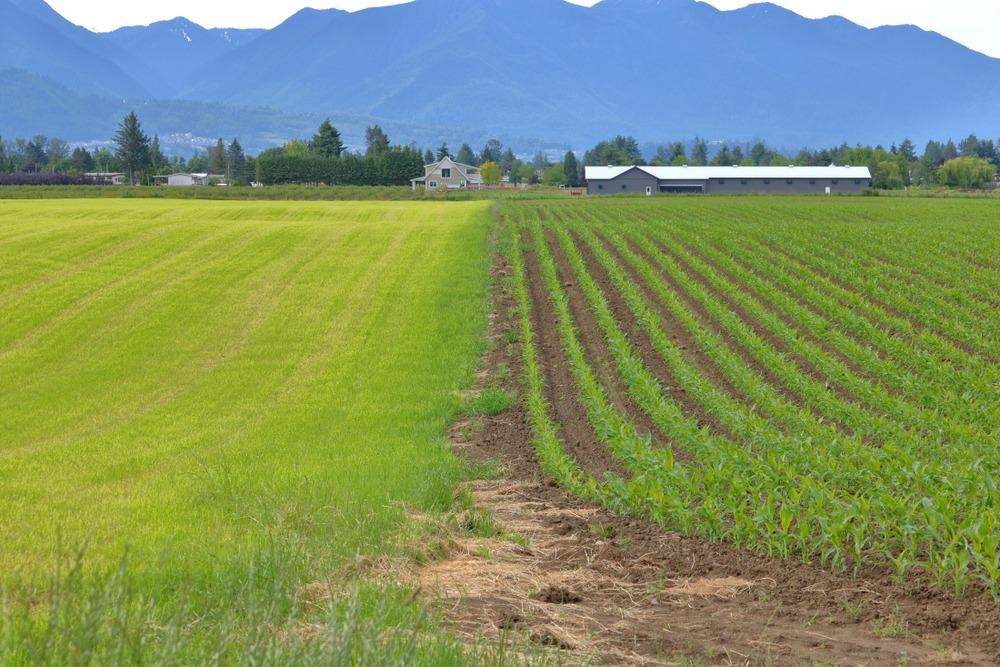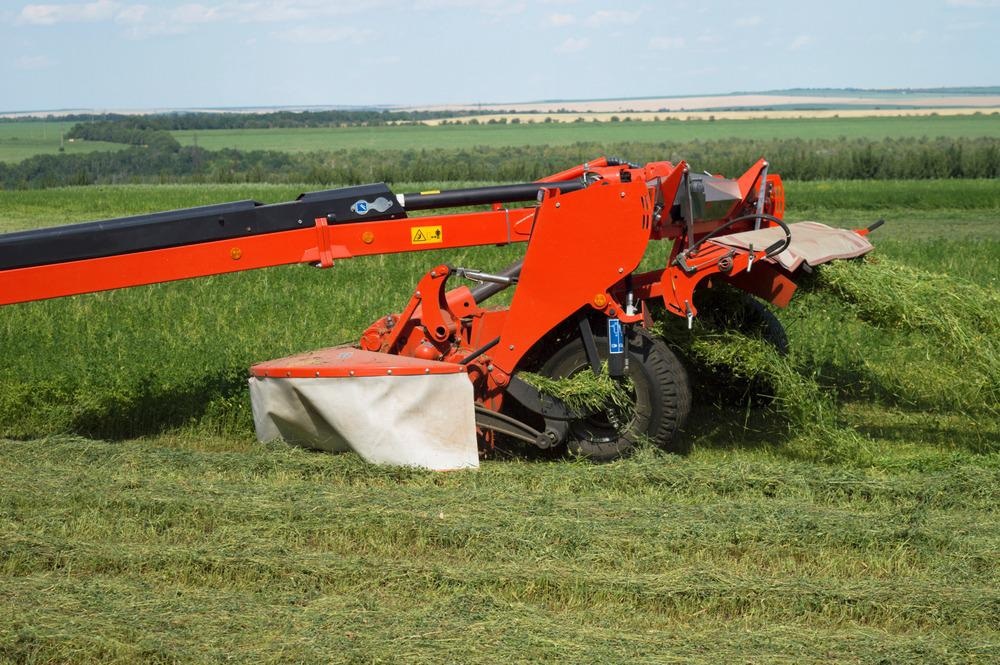In the face of a growing human population and the need for greater food production, strategies of preserving land or integrating natural elements into agricultural land have been developed in recent years. Despite persistent disagreements on land sharing versus sparing, the value of conservation has become unquestionable, thus resolving such conflicts benefits agricultural production and conservation into the future.

Image Credit: Eric Buermeyer/Shutterstock.com
Strategies for large-scale conservation in a rapidly changing world
The FAO estimates that agriculture encompasses over 14 million km2 of cropland and 33 million km2 of pasture, representing the single greatest use of land around the world. This is predicted to increase further as projections indicate by 2050 the global demand for agricultural production will double.
The conversion of land from complex natural environments to homogenized agricultural systems threatens natural ecosystems, with biodiversity in the tropics being the most vulnerable. Estimates suggest that> 80% of new agricultural land has emerged in the tropics, with high levels of habitat degradation and subsequent biodiversity loss associated with land conversion.
To address the impacts of agricultural conversion on the conservation of natural systems, two contrasting strategies have been developed. The first involves the intensification of farming on existing agricultural land to maximize per hectare yield to preserve, or spare, land elsewhere for nature (land sparing). The second strategy relies on the integration of “wildlife-friendly” habitat features within agricultural land to improve biodiversity (land sharing). Features include riparian strips, hedgerows, patches of remnant forest, and organic practices throughout farmland, to accommodate for and improve biodiversity within the exploited area.
The relative effectiveness of land sharing or sparing has been debated widely to reconcile food production and biodiversity conservation. For over a decade, researchers and agricultural policymakers have advocated for one or the other, with a consensus yet to be reached.
Addressing the disagreements between land sparing or sharing
Previous research has found that the debate between land sparing or sharing may stem from the incorporation of sociocultural values associated with agriculture, such as human livelihoods and food security, which have complexified objectives. However, further studies have found ecological and historical backgrounds of scientists themselves affect the debate between sparing and sharing of land, with more recent findings indicating the need for more context and site-specific approaches.
This was considered in a 2018 study by Phalan, who surveyed existing literature to consider the divergences between strategies and develop a predictive model to better decide which strategy to implement depending on context.
The author developed a model based on the scope of analysis (targeting food production or security), the value of high-yield farmland for wildlife, the (ir)relevance of the Borlaug hypothesis (i.e. that advancing agricultural technology enables farmers to produce more food per hectare of land), scale and heterogeneity of spatial area, fostering human connections to nature, the prospects for land sparing in heavily-modified landscapes, the role of land sparing in improving connectivity, and the political implications of the model.
By considering such a range of complexity, this model, therefore, considers social, political, and economic studies, alongside ecological aims to make better decisions about land use.
Other studies have also attempted to implement both strategies to compare their success. This was done in an applied study of bird conservation by Cannon et al., 2019. Researchers focused on bird communities in tropical cloud forests of the Colombian Andes, where they tested the performance of land sparing and sharing in conserving functional diversity using landscape and community simulations based on documented data.
Functional diversity is an ecological measure of a species’ role within their ecosystem, integrating trophic level and trophic interactions into a measurable indicator of the ecological role of taxa.
The authors demonstrated that land-sparing agriculture conserves greater functional diversity and predicts a higher abundance of species than land sharing. Further simulations showed a diminishing success of land sharing with increasing isolation from the remnant forest.
The findings of the study, therefore, reveal several components to consider before implementing strategies. For instance, simulations suggest that low-intensity agriculture is likely to conserve little functional diversity unless large areas of adjacent natural habitat are protected, consistent with land sparing. Authors, therefore, advocate for the implementation of mechanisms for increasing farmland productivity whilst protecting spared land.
Similar conclusions have been reached across other applied studies, as empirical studies considering various regions and taxa have shown more species are conserved at higher abundance within land-sparing than land-sharing farming. However, the context-dependence of strategies may be a significant factor in the associated success of strategies.

Image Credit: Viacheslav Zhedankov/Shutterstock.com
Context dependence of conservation success and future considerations
Elements of complexity, from varying spatiotemporal scales to species-specific factors, have been shown to affect the success of land sharing or sparing. As a result, identifying which factors are most important to consider is key to a more accurate assessment of situations.
This was considered by Luskin et al in a 2018 study that evaluated how authors’ recommendations of implementing either land sharing or sparing differed across study scope, methodologies, geographical focus, number of species studied, and type of cropping system.
Authors found that studies of tropical biodiversity were primarily in favor of land sparing, whereas reviews with a non-biodiversity focus favored land sharing. Authors also demonstrated that wildlife-friendly tree crops or shaded crops were the focus of most applied ecology research, while annual crops accounted for the majority of tropical cropland area and recent expansion.
Overall, trends across studies supported land-sharing to protect habitats whilst improving yield. Other studies have echoed these findings as the majority of empirical studies support species conservation via land sparing. This was a particularly valuable study as the authors progressed the land-sparing/land-sharing debate forward by clarifying elements of complexity that may lead to long-standing disagreements.
In a rapidly changing world experiencing global climate change and increasing food insecurity, conservation is playing an increasingly important role. Harnessing tools at our disposal such as rapid technological progress in computational and molecular power will help to better preserve natural systems and the species they encompass whilst ensuring adequate food production for a growing human population.

 How are Drones Changing the Future of Agriculture?
How are Drones Changing the Future of Agriculture?
Sources:
- Cannon, P. G., Gilroy, J. J., Tobias, J. A., Anderson, A., Haugaasen, T., & Edwards, D. P. (2019). Land‐sparing agriculture sustains higher levels of avian functional diversity than land sharing. Global Change Biology, 25(5), 1576–1590. https://doi.org/10.1111/gcb.14601
- Luskin, M. S., Lee, J. S., Edwards, D. P., Gibson, L., & Potts, M. D. (2018). Study context shapes recommendations of land-sparing and sharing; a quantitative review. Global Food Security, 16, 29–35. https://doi.org/10.1016/j.gfs.2017.08.002
- Phalan, B. (2018). What Have We Learned from the Land Sparing-sharing Model? Sustainability, 10(6), 1760. https://doi.org/10.3390/su10061760
- Wilhelm, J. A., & Smith, R. G. (2017). Ecosystem services and land sparing potential of urban and peri-urban agriculture: A review. Renewable Agriculture and Food Systems, 33(5), 481–494. https://doi.org/10.1017/s1742170517000205
Further Reading